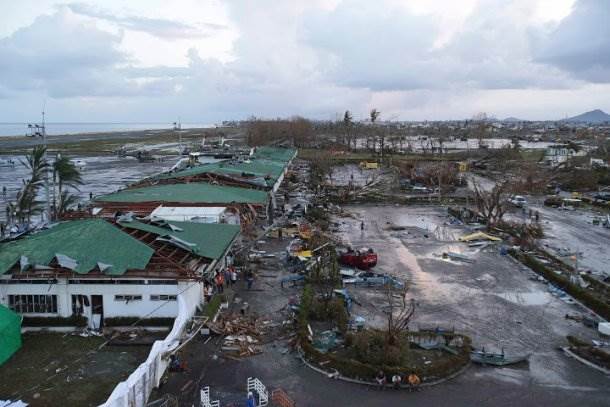
Reading Time: minutes
With an average of 7.6%, the Philippines' GDP growth has been extremely remarkable during the past quarters of 2013, outperforming most of its Asian neighbors, including China. However, the country's future seems to be uncertain as it receives a massive impact from typhoon Yolanda (international name: Haiyan), the most powerful storm to ever hit the world in the course of recorded human history. According to the NDRMMC, over 9.6 million people in 41 provinces, majority from Leyte and Samar, are affected by Yolanda with a death toll expected to rise at 10,000. The Category 5 storm destroyed over 13,000 homes as well as 80% of the buildings in the city, together with numerous major roads and public infrastructure such as Visayas' major airport in Tacloban City, in its wake.
Impact on Economy
The Philippine Stock Exchange Index as well as the all-share index retreated yesterday as concerns about the effect of the typhoon arose, diving by more than one percent. Eastern Visayas' regional center, Tacloban City, is still completely shut down, as majority of the areas in the city still do not have basic water and electricity. The economic impact of the destruction is pegged at $14-billion, according to a report from Bloomberg Industries. Philippines' Finance Secretary Cesar Purisima also forecasted that the typhoon can reduce the GDP next year by 8% to 10%, especially since Leyte is one of the main producers of sugar and rice -- two of the Philippines' major agricultural products. As of this writing, the total estimated cost of damage for the agricultural sector is at Php 3.7-billion.
Real Estate and Remittances as Buffers
Real estate and increase in remittances from abroad might be the silver lining that can buffer the losses from the disaster.
OFW remittances represent a huge chunk of the Philippines' GDP at 70% according to the Bangko Sentral ng Pilipinas. The recent disaster in the Visayas region is likely to encourage inflow of money to the country to help or assist family members who were affected by the typhoon. Foreign aid can also minimize the economic effect of the massive destruction and economic loss in Visayas.
Real estate, on the other hand, will also play a huge role in correcting the Philippine market through flow of investments in the reconstruction and rehabilitation of the affected areas. Government spending on construction and real estate for rebuilding efforts for Visayas is also likely to increase.
Conclusion
Yolanda is likely to slow down the Philippines' economic growth; however, the effects would be short-term. Philippine peso might go down a couple of notches and inflation for prices of agricultural products might slightly go up, but the recovery efforts, increased construction spending, and influx of remittances are likely to pay off in the long term and help the Philippines get back to its original pace of growth.

